

— Products —
 Consumer hotline +8618073152920
Consumer hotline +8618073152920 WhatsApp:+8615367865107
Address:Room 102, District D, Houhu Industrial Park, Yuelu District, Changsha City, Hunan Province, China
All products
Soil moisture, temperature, and EC (electrical conductivity) sensors are used to measure various properties of soil. Soil Moisture Sensor: A soil moisture sensor measures the amount of water held in the soil. Soil Temperature Sensor: A soil temperature sensor measures the temperature of the soil. Soil EC Sensor: A soil EC sensor measures the electrical conductivity of the soil, which is related to the concentration of ions in the soil solution. These sensors are often used to···
Tel/WhatsApp:+8615367865107
Email:Arvin@niubol.com +Nearly 100 partner companies in more than 68 countries. We are committed to providing high-quality, practical products to meet your needs and help you solve problems. Our products comply with international standards and are certified with ISO, CE and RoHS.Product Details
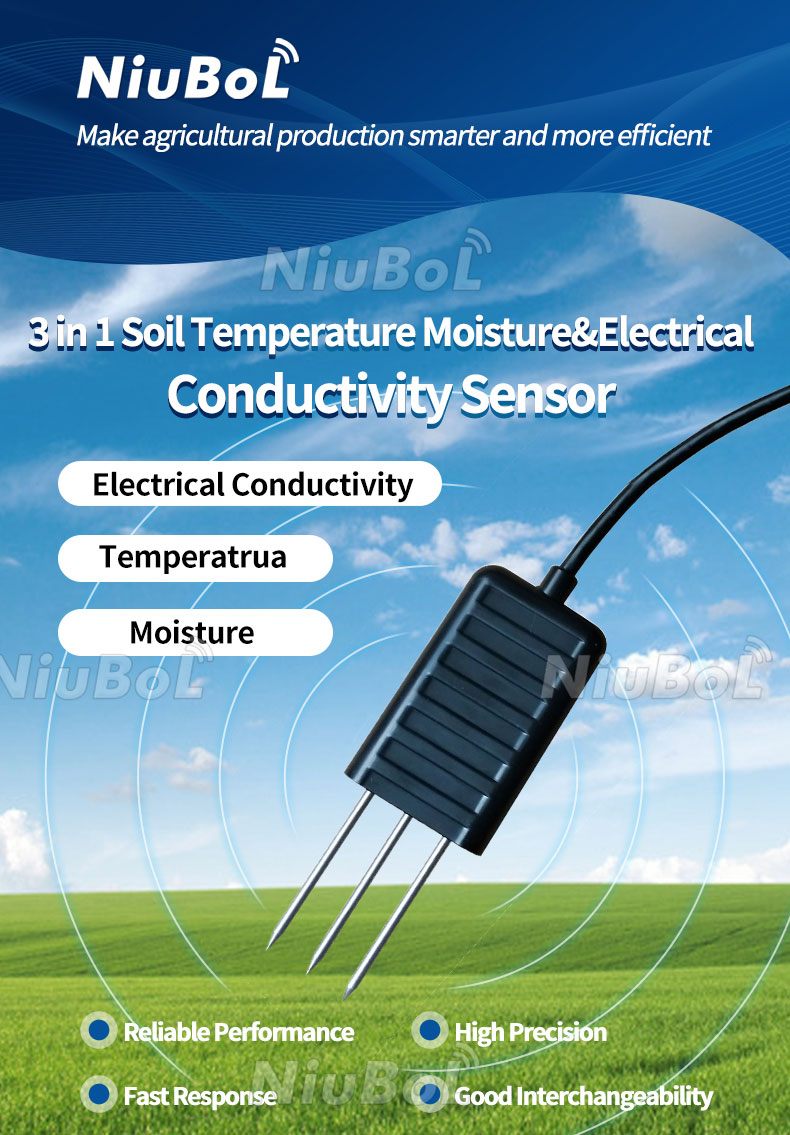
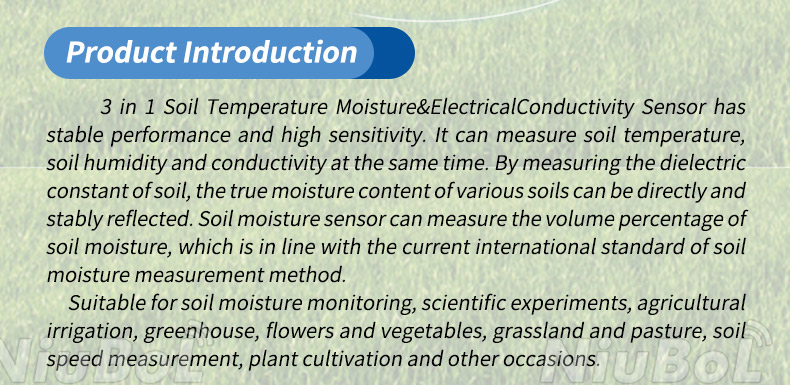
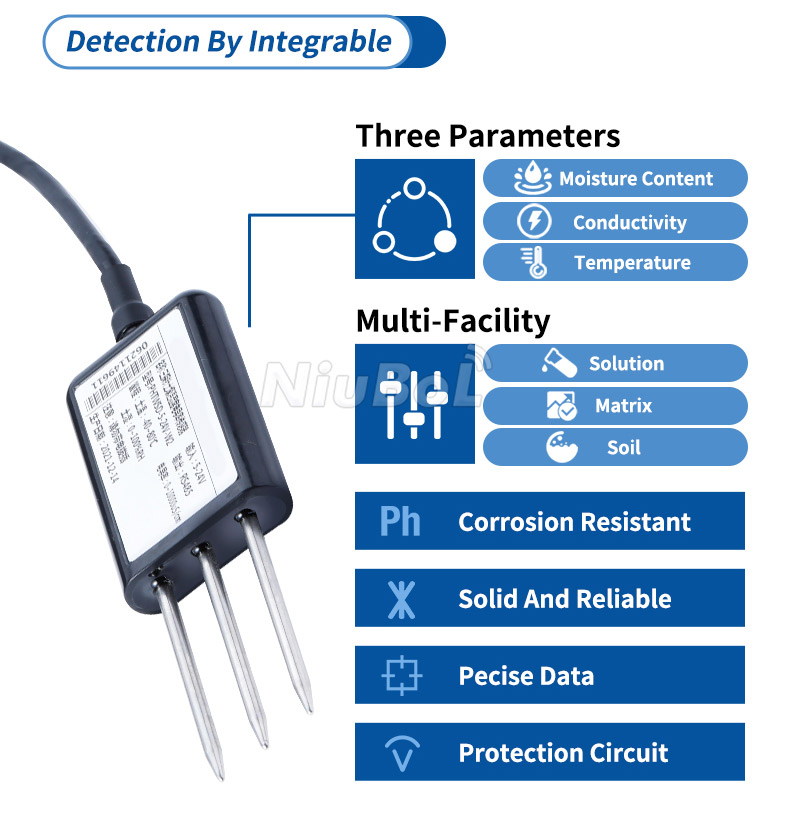
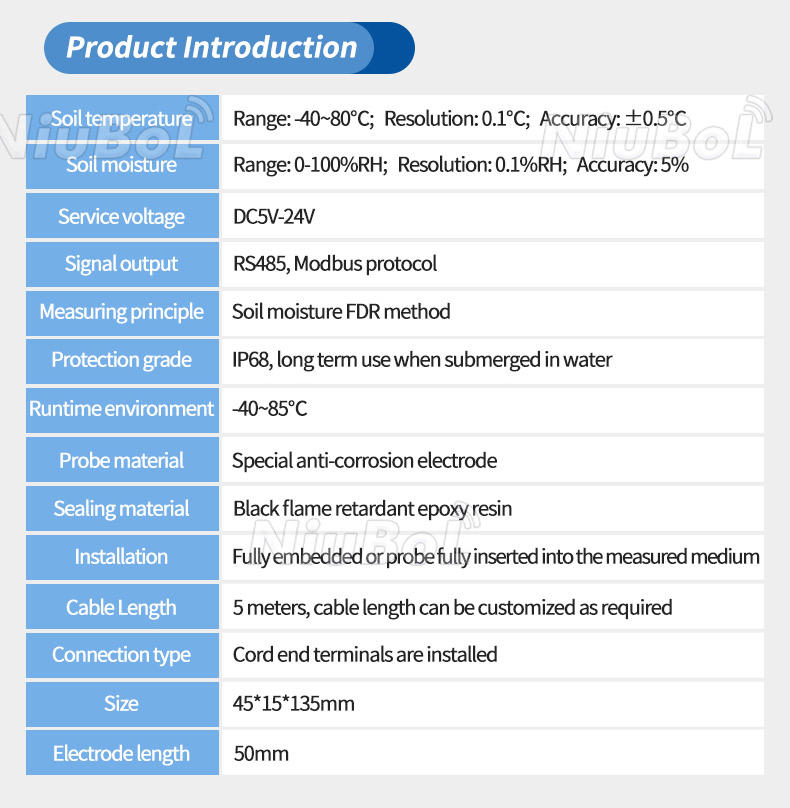
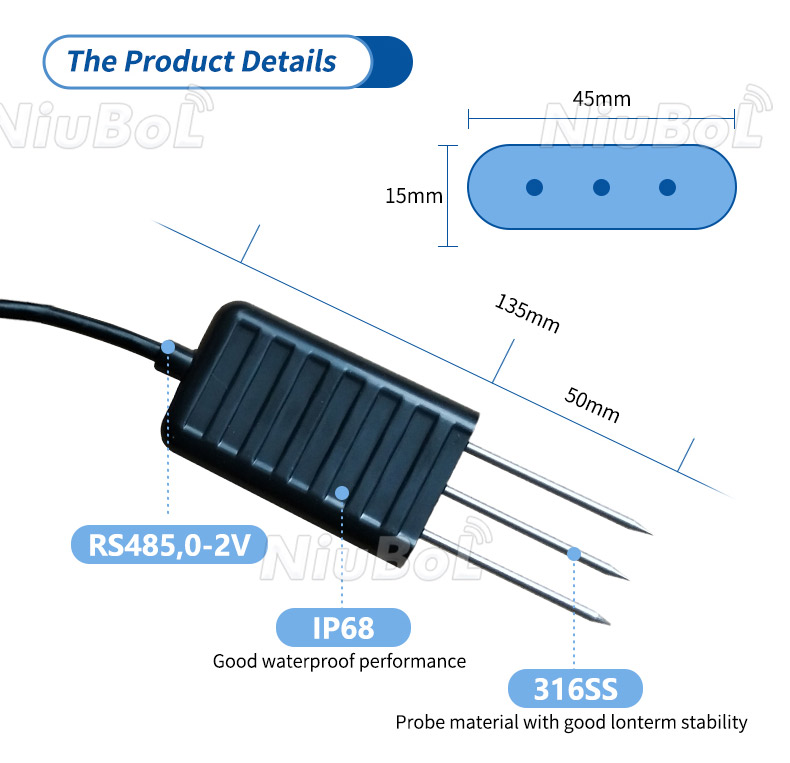
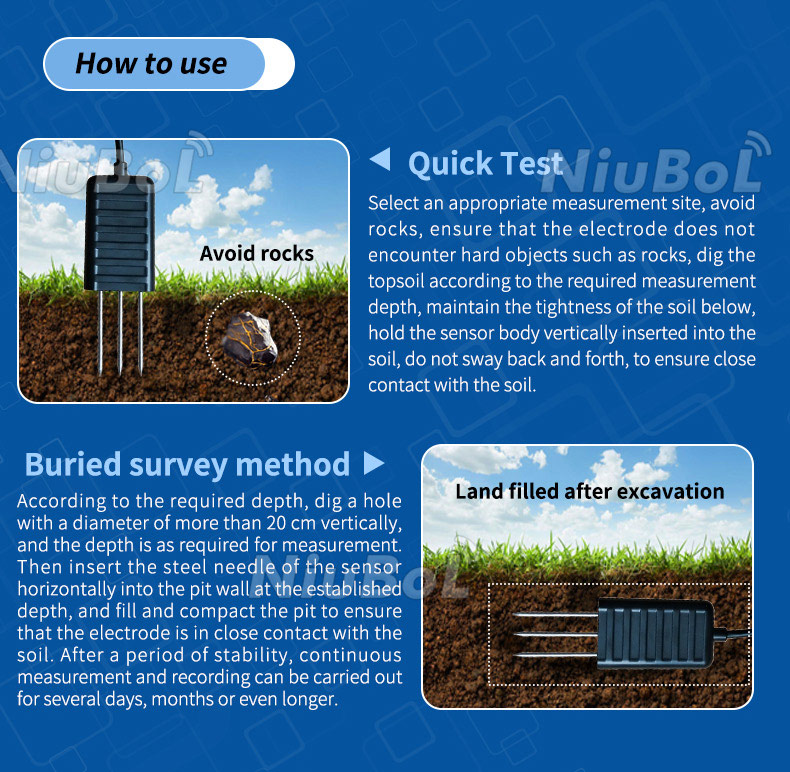
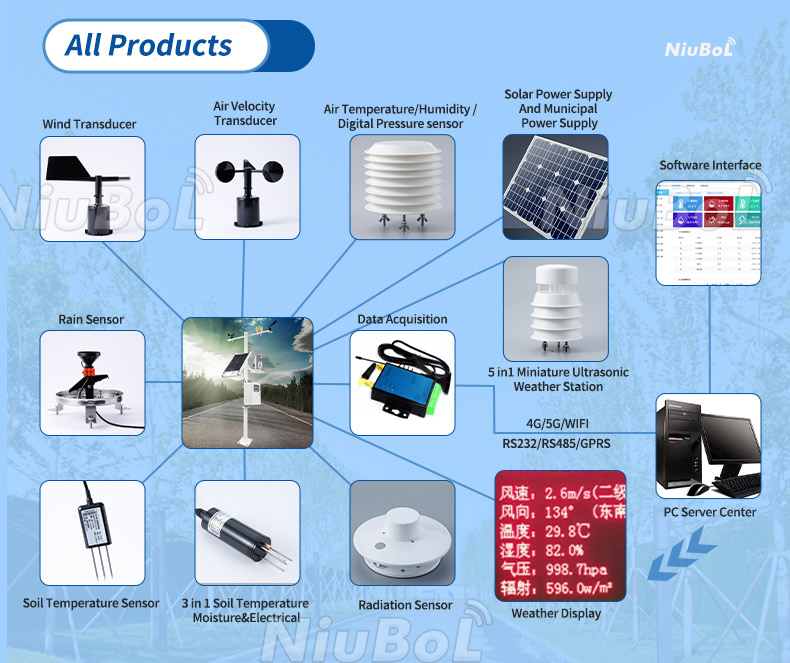
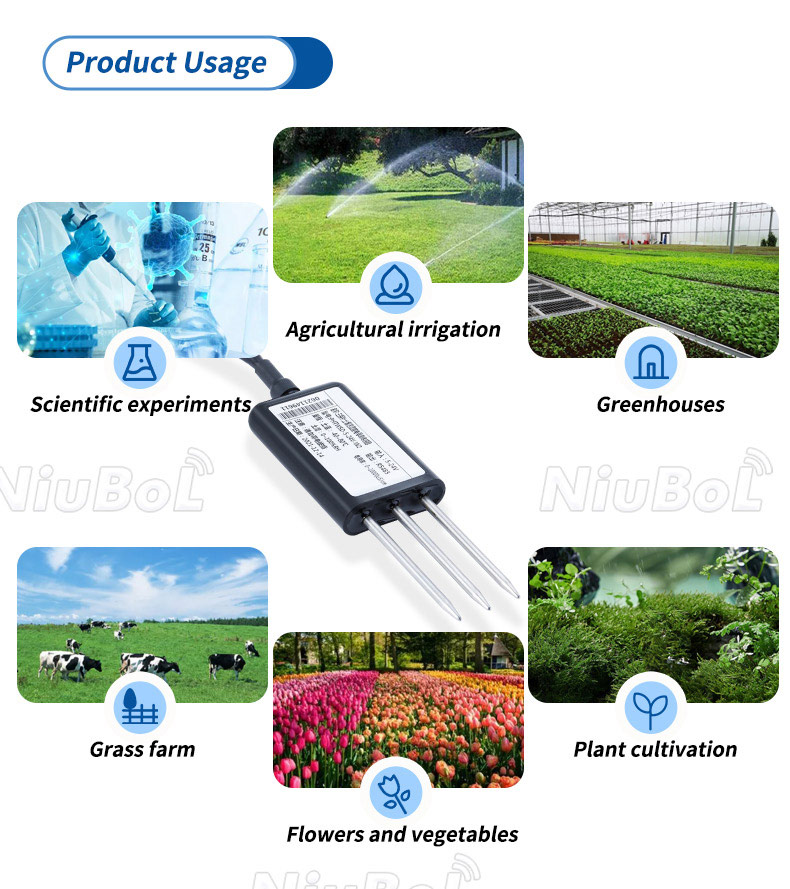
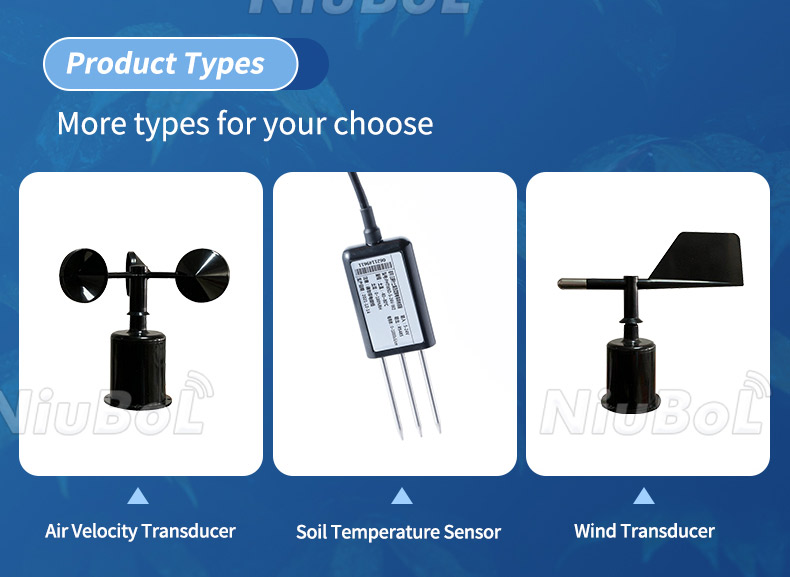
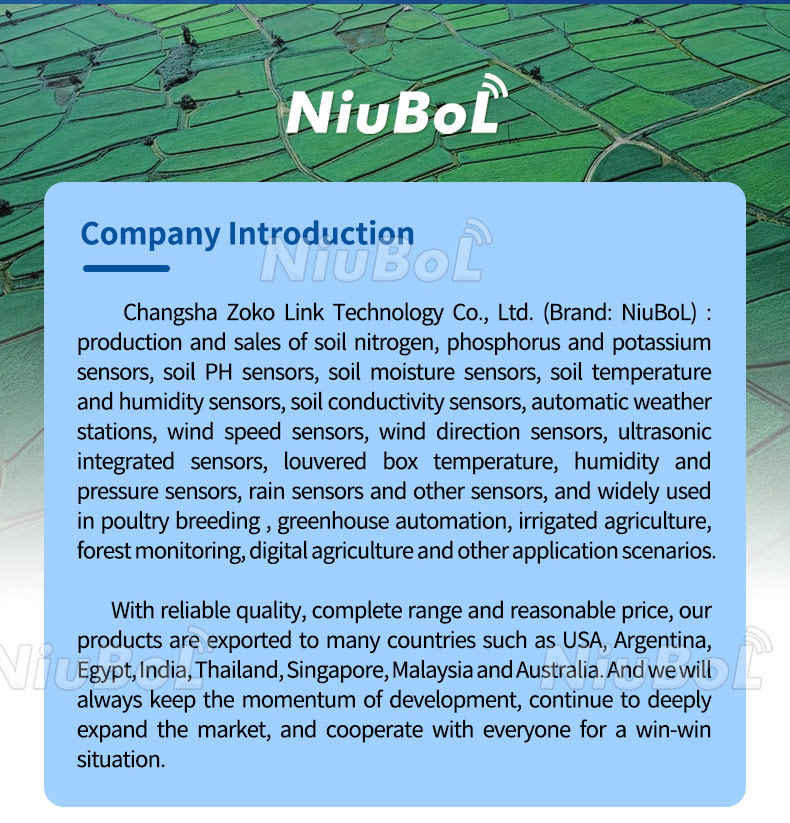
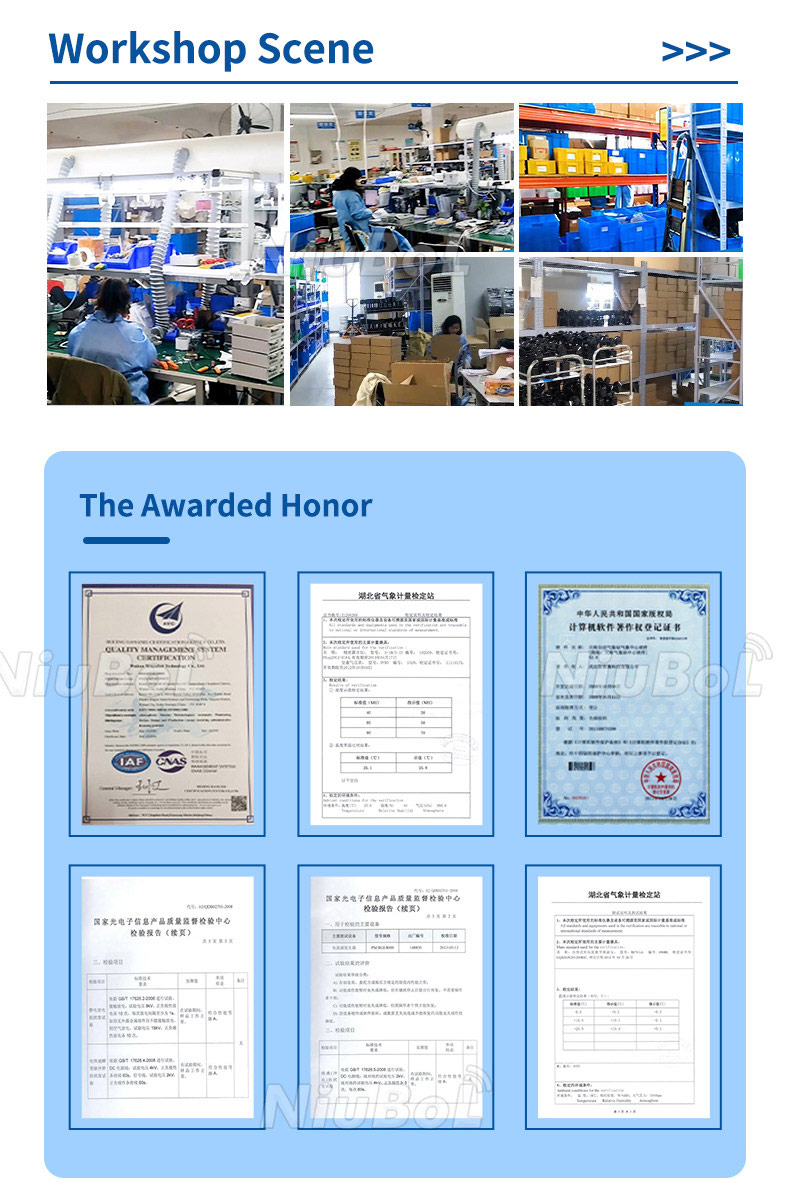

Soil moisture, temperature, and EC (electrical conductivity) sensors are used to measure various properties of soil. Here's a brief overview of each sensor:
1. Soil Moisture Sensor: A soil moisture sensor measures the amount of water held in the soil. These sensors can be either capacitance-based or resistive-based. Capacitance-based sensors measure the dielectric permittivity of the soil, which is related to the amount of water present. Resistive-based sensors measure changes in resistance caused by changes in soil moisture content.
2. Soil Temperature Sensor: A soil temperature sensor measures the temperature of the soil. These sensors can be thermistor-based or thermocouple-based. Thermistor-based sensors use the change in resistance of a thermistor with temperature, while thermocouple-based sensors use the voltage generated between two dissimilar metals when exposed to a temperature gradient.
3. Soil EC Sensor: A soil EC sensor measures the electrical conductivity of the soil, which is related to the concentration of ions in the soil solution. These sensors typically use a pair of electrodes inserted into the soil. When an electrical current is passed between the electrodes, the resistance is measured, and the EC can be calculated.
These sensors are often used together in soil monitoring systems to provide a comprehensive view of soil conditions. For example, soil moisture and temperature sensors can help farmers optimize irrigation and planting schedules, while soil EC sensors can be used to monitor nutrient levels and salinity. By combining these sensors, it's possible to develop more accurate models of soil behavior and improve crop yield.
Soil moisture, temperature, and EC sensors have various applications in agriculture, environmental monitoring, research, and water resource management. Here are some common scenarios where these sensors are used and their value:
1. Irrigation Management: Soil moisture sensors play a crucial role in efficient irrigation management. By continuously monitoring soil moisture levels, farmers can determine the optimal timing and amount of irrigation needed, preventing over- or under-watering of crops. This helps to conserve water resources, improve crop yield, and reduce water-related expenses.
2. Crop Health Monitoring: Monitoring soil moisture, temperature, and EC provides valuable insights into crop health. These sensors help identify water stress conditions, frost risks, and salinity issues. Early detection of such problems allows farmers to take corrective measures promptly, such as adjusting irrigation schedules, applying fertilizers, or implementing drainage systems, thus minimizing crop damage and optimizing productivity.
3. Research and Experimentation: Scientists, agronomists, and researchers utilize soil sensors to study the relationships between soil parameters and plant growth. By collecting data on soil moisture, temperature, and EC, researchers can analyze how these factors influence nutrient availability, microbial activity, and overall soil health. This information assists in developing improved agricultural practices and optimizing soil management techniques.
4. Environmental Monitoring: Soil sensors are employed in environmental monitoring programs to assess the impact of land-use changes, urbanization, and climate change on soil conditions. By continuously monitoring soil moisture, temperature, and EC, it becomes possible to track variations in soil properties over time, evaluate the effectiveness of remediation efforts, and analyze the effects of pollution or contamination on soil quality.
5. Water Resource Management: Soil moisture and EC sensors are used in water resource management systems to monitor soil water content and salinity levels in watersheds, river basins, and agricultural areas. This data aids in determining irrigation demands, evaluating water availability, and managing water allocation more effectively.
The value of these sensors lies in their ability to provide real-time, accurate, and site-specific data on soil conditions. This data-driven approach enables farmers, researchers, and land managers to make informed decisions, optimize resource usage, reduce environmental impacts, and enhance agricultural productivity.
1. Installation depth: The installation depth of the sensor should match the research or application needs. The root depth of different crops is different, so the appropriate installation depth should be selected according to the specific situation. Typically, soil moisture and temperature sensors are placed within the area of root activity, while EC sensors can be placed at different depths to obtain conductivity data for different soil layers.
2. Sensor spacing: When installing multiple sensors, ensure that their spacing is reasonable enough. The spacing between sensors should be representative of the area of land being studied or monitored and take into account the spatial variability of the soil. It is usually recommended to keep the sensor spacing at a certain uniformity to obtain more accurate and reliable data.
3. Installation position: It is very important to choose a representative installation position. The sensor should be installed in a typical location that represents the target area and away from sources of interference that could affect the measurement, such as trees, buildings, or other obstructions. Ensure that the sensor is placed on a flat soil surface to avoid tilting or unstable installation.
4. Power and data recording: According to the requirements of the sensor, provide the appropriate power and data recording system. This may include batteries, data collectors, data transfer equipment, etc. Ensure that the power supply is stable and reliable, and configure the appropriate data logging Settings to record and store the required data in a timely manner.
5. Protective measures: In order to protect the sensor from the influence of the external environment, some protective measures can be taken. For example, build a suitable protective layer or covering around the sensor to protect it from direct sunlight, rain erosion, or physical damage.
These are the precautions to be taken when installing soil moisture, temperature, and EC sensors. For specific installation requirements and operating procedures, refer to the detailed guide provided by the sensor manufacturer.
Sensors & Weather Stations Catalog
Agriculture Sensors and Weather Stations Catalog-NiuBoL.pdf
Weather Stations Catalog-NiuBoL.pdf
Related recommendations
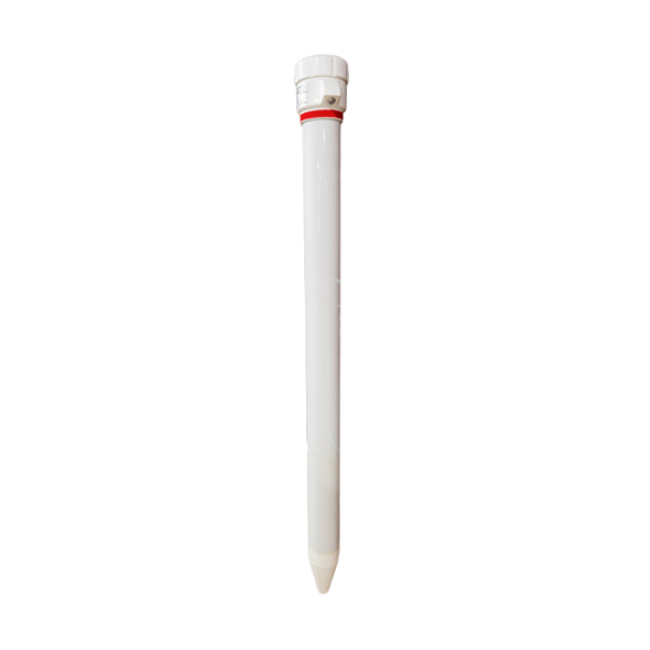 Multi-Depth Soil Sensor RS485
Multi-Depth Soil Sensor RS485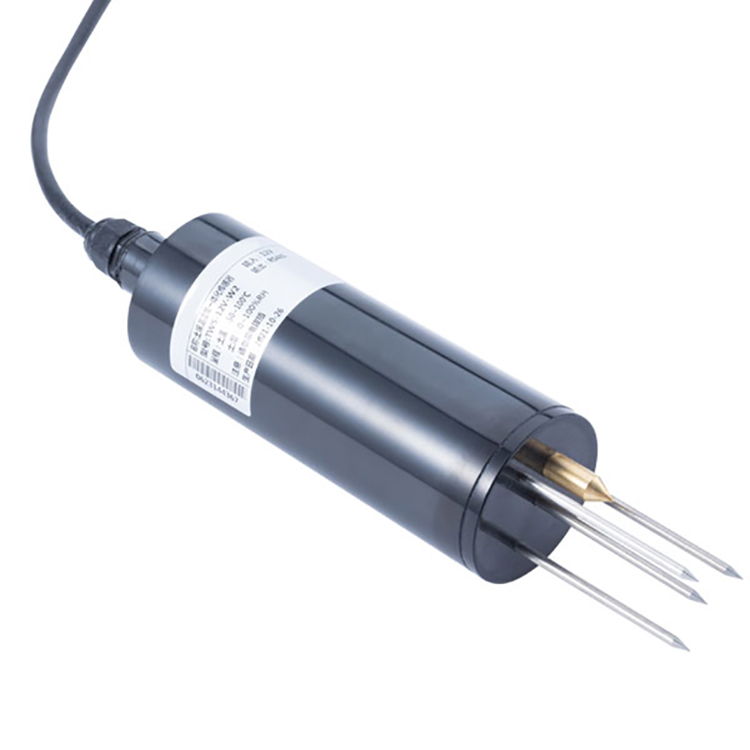 TDR Soil Moisture Sensor
TDR Soil Moisture Sensor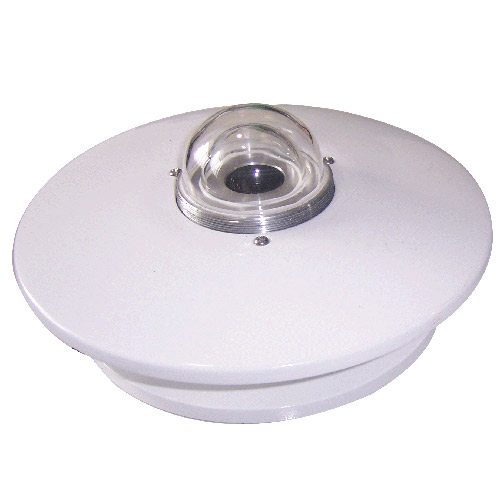 Pyranometer Solar Radiation Sensors
Pyranometer Solar Radiation Sensors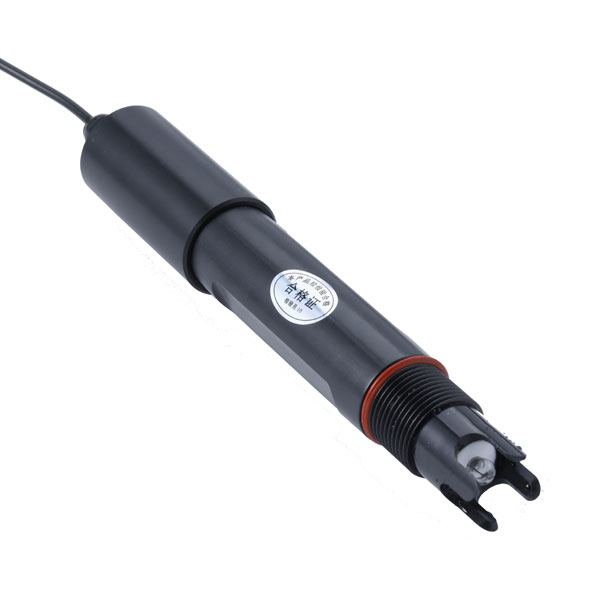 Soil ph sensor
Soil ph sensor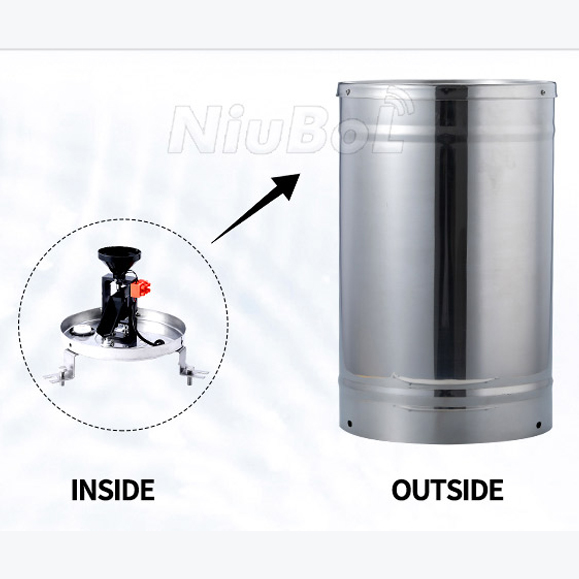 Tipping Bucket Rain Gauge
Tipping Bucket Rain Gauge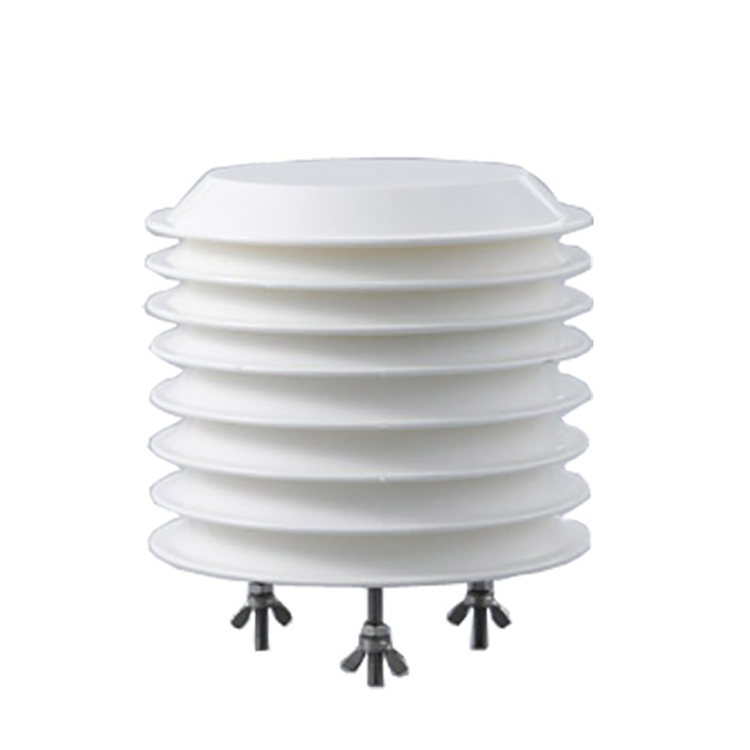 Air Temperature and Humidity Sensor
Air Temperature and Humidity Sensor
Screenshot, WhatsApp to identify the QR code
WhatsApp number:+8615367865107
(Click on WhatsApp to copy and add friends)
